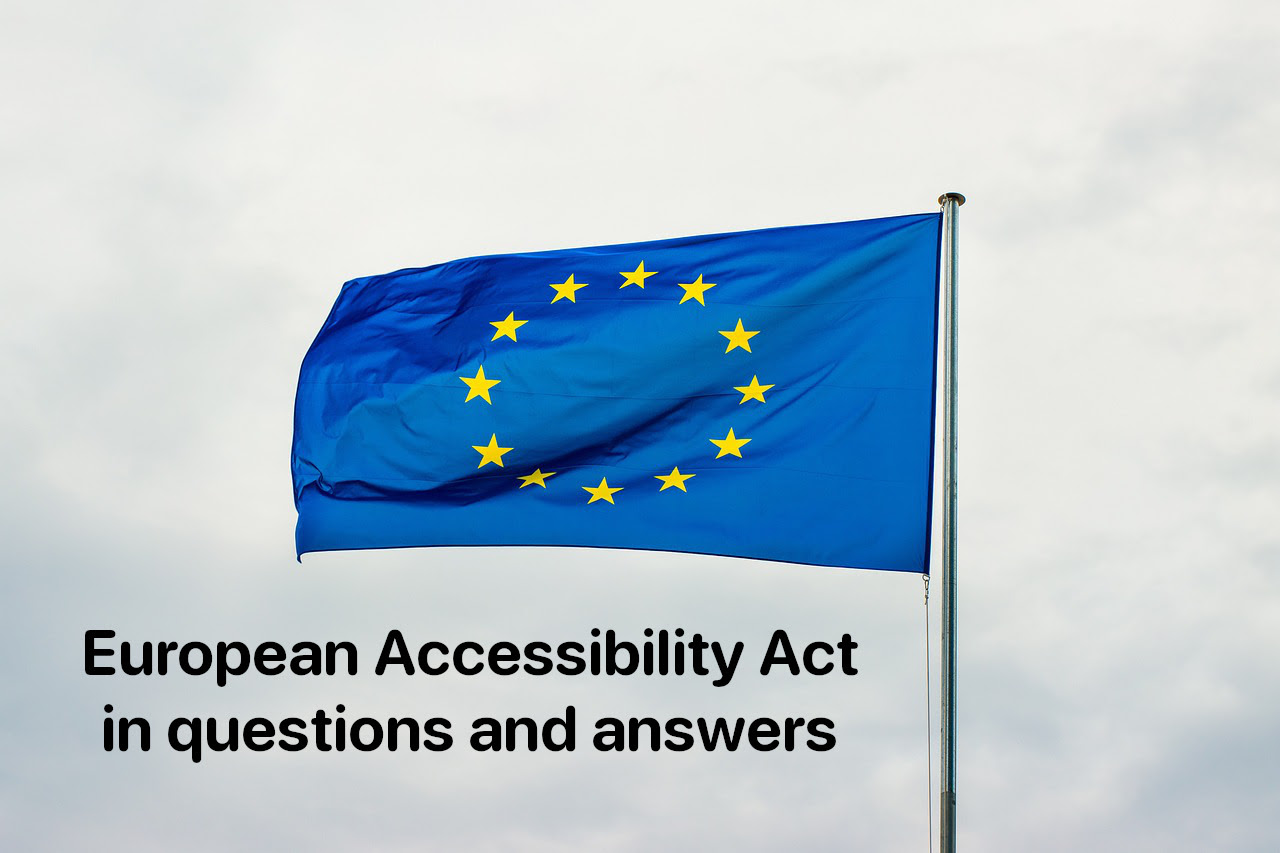A new set of minimum accessibility standards for a variety of products and services has been established across the EU under the European Accessibility Act (EAA), a piece of EU legislation. It aims to make it easier for people with disabilities to access the goods and services that are offered inside the EU’s internal market.
The Act is a Directive, which means it sets binding accessibility goals upon ratifying the United Nations Convention on the Rights of Persons with Disabilities but leaves it to the Member States of the European Union to decide how they want to achieve them. It was implemented in 2019 and completes and complements existing accessibility-related EU laws.
Key documents
- The European Accessibility Act: Directive (EU) 2019/882 of the European Parliament and of the Council of 17 April 2019 on the accessibility requirements for products and services (text with EEA relevance) is available in all EU languages. You might start by reading a brief summary of the European Accessibility Act’s regulations.
- Convention On The Rights Of Persons With Disabilities (CRPD). Since the EU and all Member States have signed the Convention, they are required to guarantee that people with disabilities have equal access to the physical environment, transportation, information and communication, and other facilities and services that are accessible to the general public. They must also take the necessary steps to guarantee that private companies that offer publicly accessible facilities and services take into account all relevant aspects of accessibility for people with disabilities.
- General Comment No. 2 (2014) on Article 9: Accessibility provides a more detailed explanation of the EU’s and Member States’ obligations to ensure accessibility for persons with disabilities under the Convention. The document is available in the following languages: English, French, Spanish, Arabic, Russian, and Chinese.
Why it was created?
The European Accessibility Act will improve the lives of at least 87 million people, or about one in five Europeans, who have impairments, many of whom are older individuals, as well as those who just temporarily experience a disability. The new regulations will make it easier for these individuals to use transport, financial services, computers, TVs, e-books, online stores, and a variety of other products. Accessibility is a requirement for people with disabilities to participate in society on the same level as others.
The common accessibility criteria of the Act will benefit businesses as well as customers. On the one hand, businesses (especially SMEs) will find it simpler to conduct business with other EU nations and will have more confidence that they can provide their goods and services across the EU. Implementing accessibility impacts innovation that enables products and services for more users.
What steps must businesses take right now to implement the act?
Businesses that offer goods and services covered by the Act must confirm that they are in conformity with all national laws and regulations in their country that implement the European Accessibility Act. Businesses have three years to make sure that the common EU accessibility standards are met by their goods and services.
What products and services fall under the regulation of the Act?
The following products and services are covered:
Products
- Computers and operating systems
- Smartphones and other communication devices
- TV equipment related to digital television services
- ATMs and payment terminals (e.g., card payment machines in supermarkets)
- E-readers
- Ticketing and check-in machines
Services
- Phone services
- Banking services
- E-commerce
- Websites, mobile services, electronic tickets and all other sources of information for air, bus, rail and waterborne transport services
- E-books
- Access to Audio-visual media services (AVMS)
- Calls to the European emergency number 112
What laws now apply, how will they change, and when? Exist any special cases?
The European Accessibility Act does not replace the sector-specific accessibility laws already in place in the EU but rather supplements them. In respect to the Act’s accessibility standards, it defines many topics, including public procurement and EU structural grants.
The European Accessibility Act must currently be incorporated into national law in every EU member state. Companies must make sure that the newly promoted goods and services covered by the Act are available as of June 28, 2025. Some exceptions may be made by Member States. For instance, they might give service providers who use self-service kiosks extra time to comply with the new standards. Microenterprises that offer services are likewise excluded from the Act’s requirements (i.e., small businesses with less than 10 workers). All microbusinesses are urged to make their goods and services accessible to those with impairments.
What are the standard demands made by the Act?
The product and service features that must be accessible to people with impairments are listed in the European Accessibility Act. The Act makes use of useful EU accessibility standards. For the purpose of making goods and services accessible, it does not place extensive technological limitations. This makes room for innovation and flexibility.
For instance, a speech-to-text alternative, adjustable magnification, volume control, or other methods can make a product’s interface accessible. Additionally, the Act mandates that websites disclose details about the services’ accessibility features. Users must be able to access the structure and content of a website and navigate its pages, even when using assistive technology.
When services or goods fail to adhere to the new regulations, what can users do?
The European Accessibility Act establishes a reliable system to guarantee adherence to its accessibility standards. EU Member States must make sure:
- Periodic compliance audits
- Review and follow-up of complaints
- Companies make the necessary improvements.
- People know which government agencies to contact with complaints.
Customers will have the option to complain to national courts or authorities starting on June 28, 2025, if services or goods do not adhere to the new regulations.
Additional resources
- Access to Public and Private Services – European Disability Forum


Comments